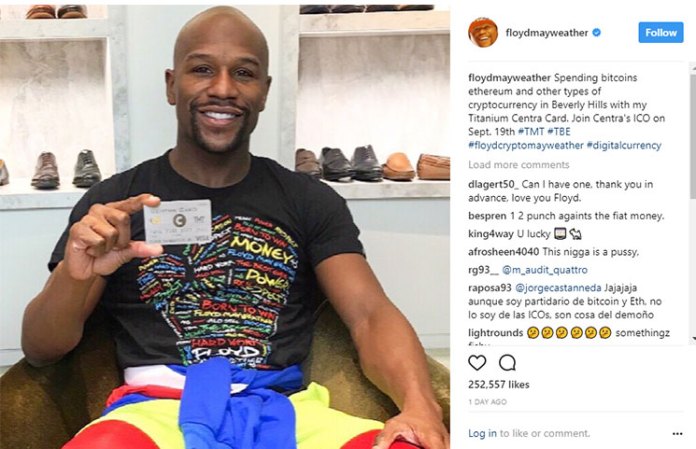Two weeks after the New York Times revealed Facebook’s controversial work with Republican opposition research firm Definers Public Affairs, Facebook COO Sheryl Sandberg has changed her story in significant ways.
The latest revelation: Sandberg herself directed Facebook’s communications team to probe the financial ties of George Soros, left-leaning billionaire and frequent political target of the right. The new reporting cites an email between Sandberg and a Facebook senior executive that was circulated more broadly to senior comms and policy staff.
As TechCrunch has learned — and Sandberg herself alluded to in a statement — Sandberg was also looped into emails about Definers, the team that later conducted research into Soros on Facebook’s behalf. Definers was also integrated more deeply into Facebook’s communications operations than has previously been reported.
People knowledgeable of Facebook’s inner workings and those outside of the company expressed surprise at Sandberg’s choice to initially deny any knowledge of the relationship with Definers. “Mark issued an absolute denial and Sheryl followed, which surprised all of us because we knew her denial wasn’t true,” a source familiar with the firm’s work told TechCrunch.
When the Definers story broke, Mark Zuckerberg issued a swift statement denying any knowledge of the firm’s work. Sheryl Sandberg also denied any knowledge of Definers, though walked that statement back four days later when Facebook’s recently departed policy and communications head Elliot Schrage took the blame for the work.
In a statement coupled with his, Sandberg said that she initially did not remember a firm named Definers but upon review admitted that the firm’s work with Facebook was “incorporated into materials” presented to her and that the firm was referenced in “a small number of emails” she had received. Facebook’s decision to hire Definers, a corporate-facing outgrowth of the Republican America Rising PAC known for its fierce opposition research, proved to be a deeply controversial departure from Silicon Valley ethical norms.
How the Definers relationship began
As TechCrunch has learned, Definers began its work with Facebook through Facebook’s content communications team and Facebook’s Director of Policy Communications, Andrea Saul, a former colleague of Definers founder Matt Rhoades. As we previously reported, many members of Facebook’s communications team are former Republican campaign staffers and strategists with ties to the outside firm that Facebook controversially brought in to support its own internal PR efforts.
Definers began working with Facebook last July and over time the firm was integrated more deeply into Facebook’s communications workings. The firm began its work through Facebook’s content communications team and Facebook’s Director of Policy Communications, Andrea Saul, a former colleague of Definers founder Matt Rhoades.
After it was set into motion, Facebook’s relationship with Definers was mostly overseen by Andrea Saul, Tom Reynolds and Ruchika Budhraja in Menlo Park. In Washington D.C., Definers was handled by Andy Stone under Facebook’s chief lobbyist, Joel Kaplan. Kaplan, who worked in the George W. Bush administration with Definers’ founder and its president, was also in the loop due to his role as a strong in-house Republican voice among many at Facebook. Kaplan made headlines recently when he made a public show of support for Supreme Court nominee Brett Kavanaugh who was accused of sexual violence.
As TechCrunch previously reported, many members of Facebook’s communications team are former Republican campaign staffers and strategists with ties to the outside firm that Facebook controversially brought in to support its own internal PR efforts. Facebook’s Tucker Bounds also has close ties to Definers through his friend Tim Miller, who helped create America Rising, the political action committee prong of the firm. His role in the relationship with Facebook, if any, is not clear.
It’s true that Definers came on board initially for more generic PR support — not oppo research per se — and that’s how the firm’s involvement was framed in an email introducing them into Facebook’s own team. According to a source who spoke with TechCrunch, “The work that they were doing initially was nonpartisan, it was media monitoring.” Definers provided Facebook with its own press lists and engaged in other more mundane day to day PR activities.
Over time, Facebook leaned more heavily on the outside firm. Definers worked closely with Facebook’s policy communications team, checking in through weekly calls. While legal firm WilmerHale prepared the Facebook CEO and COO for their time on the stand, Definers also assisted with all three Congressional hearings that brought Facebook before Congress, including Zuckerberg and Sandberg’s hearings. For Sandberg’s hearing, Definers handled the crisis PR responding to the event and the coverage around the testimony.
“Facebook consultants are on very short leashes,” a source familiar with the work told TechCrunch. “Everything that Definers shared with media was approved by a Facebook employee.” While an outside agency might have more autonomy in working with a different company, Facebook was closely involved in the firm’s work and was likely aware of all of its plans and dealings. “Definers knows where the bodies are buried,” the source told TechCrunch.
So far nothing has turned up to indicate that Zuckerberg, like Sandberg, had prior exposure to the firm’s work. Given his general disinterest in media relations, it is believable that Mark Zuckerberg had no awareness of Definers or the communications team’s deep and often out in the open ties with the external Republican communications firm. Zuckerberg is far less involved in the strategic decisions that go into the way Facebook positions itself to the outside world than Sandberg herself.
Facebook’s communications team is an infamously well-oiled machine and that machine is often put to use to protect Sandberg and promote her agenda — at times over Facebook’s own interests. If Sandberg’s latest and perhaps most surprising admission will at last strain trust in her leadership to a breaking point remains to be seen.
Know anything about this story and have something to add? Contact me at taylor.hatmaker@techcrunch.com. Secure contact for files and sensitive info: Signal 510.545.3125 or thatmaker@protonmail.com.

 “As you add more and more people [on any social network], you start not to know them. That’s obviously going to change the things that you’re sharing and it makes it even harder to form every deep connections with your closest friends because you’re basically curating for the largest possible distribution” Instagram director of product Robby Stein. “To really be yourself and connect and be connected to your best friends, you need your own place.”
“As you add more and more people [on any social network], you start not to know them. That’s obviously going to change the things that you’re sharing and it makes it even harder to form every deep connections with your closest friends because you’re basically curating for the largest possible distribution” Instagram director of product Robby Stein. “To really be yourself and connect and be connected to your best friends, you need your own place.” So Instagram chose to build Close Friends as just a single list in hopes that you won’t lose track of who’s part of it. As the feature rolls out today, there’ll be an explainer Story from Instagram about it in your tray, you’ll get walked through when you hit the Close Friends button on the Story composer, and there’ll be a call out on your profile to configure Close Friends in the settings menu. You’ll be able to search for your close friends or quickly add them from a list of suggestions based on who you interact with most. You can add or remove as many people as you want without them knowing, they just will or won’t see your green circled Close Friends story. “We’re protecting you and your right to share or not share to certain people. It gives you air cover” Stein tells me
So Instagram chose to build Close Friends as just a single list in hopes that you won’t lose track of who’s part of it. As the feature rolls out today, there’ll be an explainer Story from Instagram about it in your tray, you’ll get walked through when you hit the Close Friends button on the Story composer, and there’ll be a call out on your profile to configure Close Friends in the settings menu. You’ll be able to search for your close friends or quickly add them from a list of suggestions based on who you interact with most. You can add or remove as many people as you want without them knowing, they just will or won’t see your green circled Close Friends story. “We’re protecting you and your right to share or not share to certain people. It gives you air cover” Stein tells me

